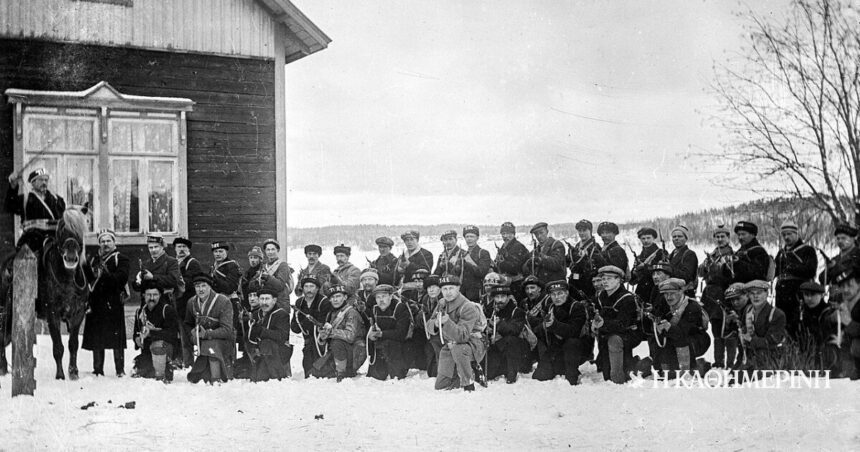In January 1918, though it was approaching its end, World War I was still raging. Another local dispute was added to this unprecedented conflict: the Finnish Civil War.
Even the name of this conflict remains controversial in public debate: in various ways as a “class conflict”, “war of independence” or “civil war”. The debate on its name reflects the profound ideological and social processes that fueled this brief but violent confrontation, which lasted from January 27 to May 15, 1918 and was expected to change the course of Finland as a newly established nation.
Finland’s course toward the conflict was product of deeper class tensions and geopolitical unrest. As a great Duchy of the Russian Empire since 1809, Finland had developed significant autonomy. However, increasing industrialization and urbanization in the late 19th and early 20th centuries brought to the forefront of intense inequalities. The working class, which was crowded in cities-toasts such as Tampere, was facing sad living conditions compared to urban elitewho prospered and lived comfortably.
In addition, Russia’s influence seemed to be great. The 1905 revolution triggered waves of political activism in Finland, which led to the establishment of the right to the Catholic vote in 1906. However, systemic inequalities were still existing as wealth and political power remained concentrated in the hands of elite. The outburst of World War I worsened the tensions, with the deficiencies and conflict to shake the Finnish society.
When the Russian Empire dissolved after the Bolsheviks’ revolution in 1917, Finland seized the opportunity to declare its independence on December 6 of the same year. However, this newly acquired freedom simply deepened the political gap between the conservative factions of Finland and the socialist movement, as both sides competed for the “next day” of the newly established democracy. One of the expressions of this competition was the formation of rival militia: of White militiawho represented the conservative and nationalist forces, and of the Erythropricelinked to the socialist and hardworking side
In January 1918, Finland was on the verge of open conflict. ‘Whites’, supported by German interests who wished to limit the influence of the Bolsheviks in the area, sought to consolidate their control. ‘Erythus’, inspired by the Bolsheviks and their victoryand looking forward to Soviet support, they envisioned a socialist revolution.
On January 27, 1918, the Finnish Senate, dominated by conservative “white”, approved the creation of state military forces under General Carl Gustaf Emil Manemim. The same night, Red Guards called in revolution Lighting red lanterns at the top of Helsinki’s working mansion. The first major conflict came the next day as “Reds” invaded the Finnish Senate in Helsinki, seeking to gain government control.
The Finnish civil war was not just an internal conflict. There was a new theater in the geopolitical clash between Russia and Germany. The Bolsheviks provided limited material support to the “reds” as they were busy consolidating their own revolution. Germany, meanwhile, supplied the “white” weapons and troops, with the aim of creating a sphere of influence in Finland.
The war was expected to last a few months as it ended in May 1918 with a victory for the “whites”. However, the cost was shocking: Over 36,000 people – Stands and civilians – lost their lives while the nation was divided.
After the war, Germany’s influence in Finland was reinforced. The conservative white leadership sought closer ties with Germany, culminating in the placement of a German prince, Friedrich Carl of Esssi, as King of Finland. However, Germany’s defeat in World War I in November 1918 made these plans utopian, leaving Finland to chart its course as democracy.
Although Finland’s independence was established immediately after the end of the war ‘Whites’ made harsh retaliation against reds – including mass imprisonment, executions and forced labor camps. Left supporters faced extensive social ostracismresulting in the depths of the gap between the working class and the conservative elite. This division was maintained during the 1920s and 1930s, influenced by Finnish politics and society.
However, the passage of time and the consolidation of the Finnish welfare state have gradually helped bridging these divisions. The integration of socialist parties into the democratic process has promoted reconciliation, although the memory of the war has remained in national consciousness for decades.
Column Curator: Myrto Katsiera, Vassilis Menakakis, Antigoni-Despina Poumenidou, Athanasios Syroplakis








